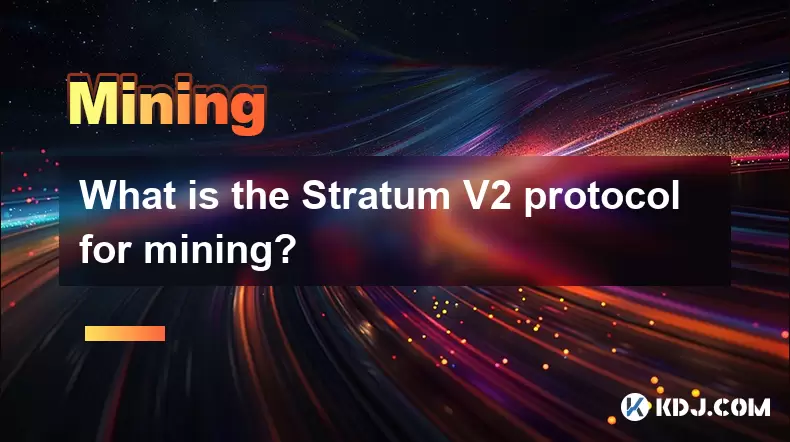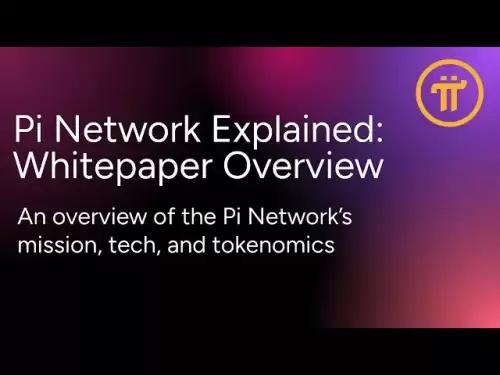-
 Bitcoin
Bitcoin $121,713.8152
3.06% -
 Ethereum
Ethereum $3,041.6437
2.42% -
 XRP
XRP $2.9499
5.12% -
 Tether USDt
Tether USDt $1.0000
-0.02% -
 BNB
BNB $704.1034
1.75% -
 Solana
Solana $166.7523
2.91% -
 USDC
USDC $0.9999
0.00% -
 Dogecoin
Dogecoin $0.2052
2.90% -
 TRON
TRON $0.3011
-0.47% -
 Cardano
Cardano $0.7461
1.42% -
 Hyperliquid
Hyperliquid $48.3650
1.12% -
 Stellar
Stellar $0.4548
3.52% -
 Sui
Sui $3.9527
14.50% -
 Chainlink
Chainlink $16.3300
5.87% -
 Bitcoin Cash
Bitcoin Cash $511.8016
1.25% -
 Hedera
Hedera $0.2395
1.40% -
 Avalanche
Avalanche $21.6526
2.06% -
 UNUS SED LEO
UNUS SED LEO $9.0073
-0.23% -
 Shiba Inu
Shiba Inu $0.0...01369
2.61% -
 Toncoin
Toncoin $3.0335
0.66% -
 Litecoin
Litecoin $96.6206
1.72% -
 Monero
Monero $355.1673
5.35% -
 Polkadot
Polkadot $4.0839
2.47% -
 Uniswap
Uniswap $9.3282
9.72% -
 Dai
Dai $0.9997
-0.01% -
 Ethena USDe
Ethena USDe $1.0004
-0.04% -
 Pepe
Pepe $0.0...01248
1.07% -
 Bitget Token
Bitget Token $4.4642
2.68% -
 Aave
Aave $325.0626
6.81% -
 Bittensor
Bittensor $418.1482
6.22%
What is the Stratum V2 protocol for mining?
Stratum V2 enhances cryptocurrency mining with decentralized work negotiation, improved efficiency, and stronger security over the older Stratum V1 protocol.
Jul 15, 2025 at 01:28 am

Understanding the Basics of Stratum V2
The Stratum V2 protocol is a modern mining communication standard designed to improve efficiency, security, and decentralization in cryptocurrency mining operations. Initially introduced as an upgrade to the older Stratum V1 protocol, Stratum V2 introduces several technical enhancements that allow miners to have more control over the blocks they are working on. This includes features like the ability for miners to construct their own block templates, which reduces reliance on centralized mining pools.
One of the core goals of Stratum V2 is to reduce the centralization risks associated with large mining pools by enabling decentralized mining coordination. The protocol achieves this through the use of work negotiation, where miners can negotiate their own work units directly with the pool server rather than receiving pre-defined work from it.
Key Features of Stratum V2 Protocol
Work Negotiation: Unlike Stratum V1, where mining pools assign fixed work to miners, Stratum V2 allows miners to propose and agree upon specific work units. This gives miners more autonomy and helps distribute trust across the network.
Job Redundancy Elimination: Stratum V2 ensures that no two miners receive identical work units, which maximizes hashing efficiency and prevents wasted computational resources.
Better Bandwidth Efficiency: The new protocol uses binary encoding instead of JSON for data transmission, significantly reducing bandwidth usage and improving overall performance.
Enhanced Security: Stratum V2 supports encrypted communication between miners and pool servers, protecting against man-in-the-middle attacks and unauthorized access.
These features collectively contribute to a more efficient and secure mining environment, aligning with the broader goals of decentralization within blockchain ecosystems.
How Stratum V2 Differs From Stratum V1
The original Stratum V1 protocol was developed to replace the outdated Getwork and long-polling protocols. It introduced a persistent TCP connection between miners and mining pools, allowing real-time updates and reducing latency. However, Stratum V1 had limitations, especially regarding centralization and scalability.
In contrast, Stratum V2 introduces a modular architecture that separates the roles of the mining pool and the miner. Miners can now generate their own block templates, negotiate job distribution, and even participate in consensus decisions without relying entirely on the pool operator.
Another major difference lies in the structure of data exchange. Stratum V2 uses a binary-based serialization format instead of JSON, which lowers overhead and speeds up message parsing. This change makes the protocol more scalable, particularly for large-scale mining farms with thousands of devices.
Setting Up Stratum V2: A Step-by-Step Guide
For miners looking to adopt Stratum V2, setting up compatible software and hardware involves several key steps:
Ensure your mining software (e.g., BFGMiner or modern forks) supports Stratum V2. Many legacy mining tools do not include native support for the newer protocol.
Choose a mining pool that has implemented Stratum V2. Some pools offer both V1 and V2 compatibility, but full utilization of V2 benefits requires a pool-side implementation.
Update your configuration files or command-line arguments to specify the Stratum V2 endpoint provided by the pool. This typically involves modifying URLs or using special flags indicating V2 support.
Enable encryption if supported by both the pool and the miner. This step enhances security by preventing eavesdropping or tampering during work distribution.
Monitor logs and performance metrics to ensure successful negotiation of work units and confirm that there are no duplicate shares or rejected submissions due to misconfigurations.
Following these steps enables miners to take full advantage of the enhanced capabilities offered by the Stratum V2 protocol.
Challenges and Adoption Barriers of Stratum V2
Despite its advantages, Stratum V2 adoption has been relatively slow due to several factors:
Lack of Pool Support: Many popular mining pools have yet to fully implement Stratum V2, limiting access for most miners.
Compatibility Issues: Older mining rigs and firmware may not be capable of running Stratum V2-compatible software, requiring upgrades or replacements.
Technical Complexity: The protocol's advanced features require deeper understanding and configuration, which can be daunting for novice miners.
Limited Miner Software Options: While some mining software supports Stratum V2, the ecosystem is still developing, and mainstream adoption remains limited.
These challenges hinder widespread deployment but also present opportunities for innovation and improvement within the mining community.
Frequently Asked Questions
Q: Can I use Stratum V2 with any mining pool?
A: No, you need a mining pool that specifically supports Stratum V2. Most pools still operate on Stratum V1 or other legacy protocols unless explicitly stated otherwise.
Q: Is Stratum V2 mandatory for mining?
A: No, Stratum V2 is optional. You can continue using older protocols like Stratum V1 or even Getwork if your mining pool and software support them.
Q: Does Stratum V2 increase mining profitability?
A: While Stratum V2 does not directly increase hash rate or rewards, it improves efficiency and reduces redundancy, which can lead to better long-term profitability for large-scale operations.
Q: Do all mining software support Stratum V2?
A: No, only select mining software such as certain versions of BFGMiner and specialized forks currently support Stratum V2. Always check compatibility before attempting to configure it.
Disclaimer:info@kdj.com
The information provided is not trading advice. kdj.com does not assume any responsibility for any investments made based on the information provided in this article. Cryptocurrencies are highly volatile and it is highly recommended that you invest with caution after thorough research!
If you believe that the content used on this website infringes your copyright, please contact us immediately (info@kdj.com) and we will delete it promptly.
- Ruvi AI: The Audited Token Set to Outshine Ethereum with Massive Gains?
- 2025-07-15 06:50:12
- DeFi Token with 10X Potential: Mutuum Finance and the Year-End Opportunity
- 2025-07-15 06:50:12
- Ethereum, 2025 Prediction & Ozak AI: Are New?
- 2025-07-15 06:30:12
- Bitcoin Blasts Past $122K: CZ Binance's ATH Future Vision
- 2025-07-15 06:30:12
- Metaplanet's Crypto Playbook: Asia Treasuries and the Bitcoin Standard
- 2025-07-15 06:35:12
- Token Buybacks & Altcoin Developers: Navigating Market Tokens in the Wild West
- 2025-07-15 04:30:12
Related knowledge

How are crypto mining profits taxed?
Jul 14,2025 at 12:28am
Understanding Cryptocurrency Mining and TaxationCryptocurrency mining involves validating transactions on a blockchain network and earning rewards in ...

How to keep a mining rig cool
Jul 12,2025 at 01:42pm
Understanding the Importance of Cooling in Mining RigsCryptocurrency mining is an intensive process that places heavy demand on hardware components, p...

How much does it cost to start crypto mining?
Jul 13,2025 at 12:22am
Understanding the Basic Costs of Crypto MiningStarting crypto mining involves several upfront and ongoing expenses. The primary costs include hardware...

What is the most profitable crypto to mine?
Jul 13,2025 at 07:00am
Understanding Mining Profitability in CryptocurrencyWhen evaluating the most profitable crypto to mine, it's essential to consider several factors tha...

What do I need to start mining crypto?
Jul 13,2025 at 12:28am
Understanding the Basics of Crypto MiningCrypto mining is the process by which transactions are verified and added to a blockchain, and new coins are ...

How does crypto mining work?
Jul 13,2025 at 11:01am
Understanding the Basics of Crypto MiningCrypto mining is the process through which new cryptocurrency coins are introduced into circulation and trans...

How are crypto mining profits taxed?
Jul 14,2025 at 12:28am
Understanding Cryptocurrency Mining and TaxationCryptocurrency mining involves validating transactions on a blockchain network and earning rewards in ...

How to keep a mining rig cool
Jul 12,2025 at 01:42pm
Understanding the Importance of Cooling in Mining RigsCryptocurrency mining is an intensive process that places heavy demand on hardware components, p...

How much does it cost to start crypto mining?
Jul 13,2025 at 12:22am
Understanding the Basic Costs of Crypto MiningStarting crypto mining involves several upfront and ongoing expenses. The primary costs include hardware...

What is the most profitable crypto to mine?
Jul 13,2025 at 07:00am
Understanding Mining Profitability in CryptocurrencyWhen evaluating the most profitable crypto to mine, it's essential to consider several factors tha...

What do I need to start mining crypto?
Jul 13,2025 at 12:28am
Understanding the Basics of Crypto MiningCrypto mining is the process by which transactions are verified and added to a blockchain, and new coins are ...

How does crypto mining work?
Jul 13,2025 at 11:01am
Understanding the Basics of Crypto MiningCrypto mining is the process through which new cryptocurrency coins are introduced into circulation and trans...
See all articles

























































































